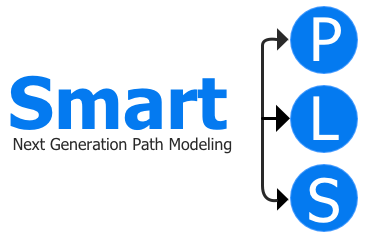Organizational Identification Model
The project and basic model
This project contains the sample organizational identification model for partial least squares structural equation modeling (PLS-SEM). The data (305 observations) is taken from U.S. The article by Bergami & Bagozzi (2000) in detail explains the data used and the model with its specific indicators (see also Hwang & Takane, 2004).
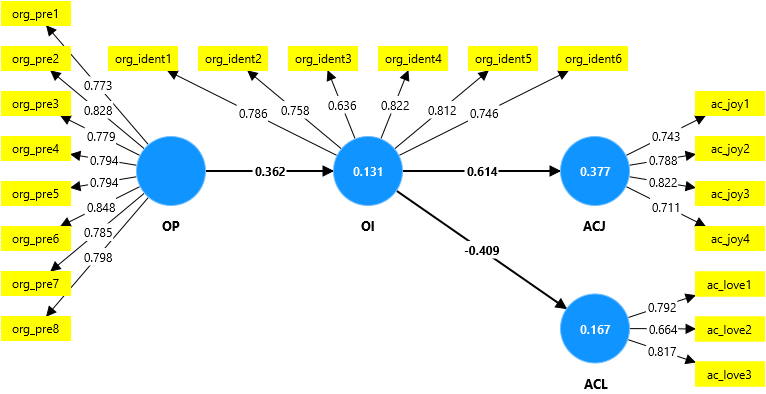
Model variations
In addition, we present several model variations using techniques explained, for example, in the textbooks by Hair et al. (2022) and Hair et al. (2024).
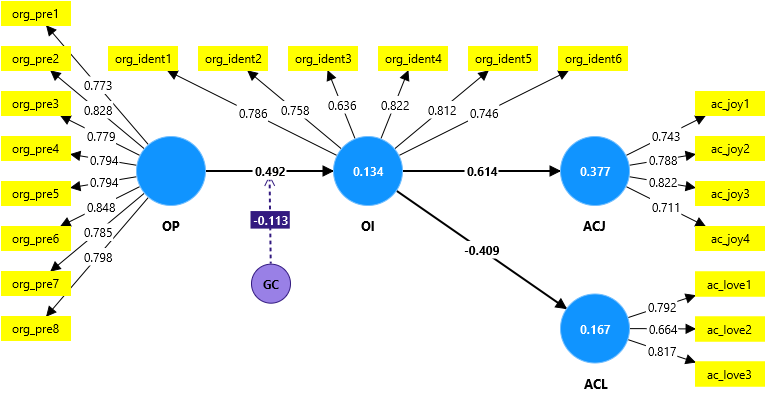
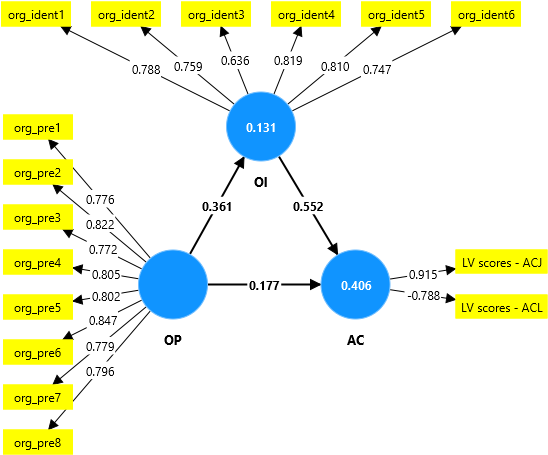
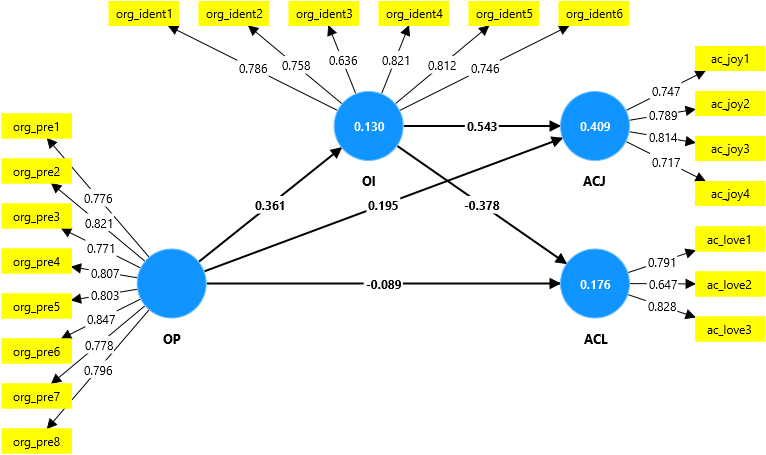
- Moderated-mediation
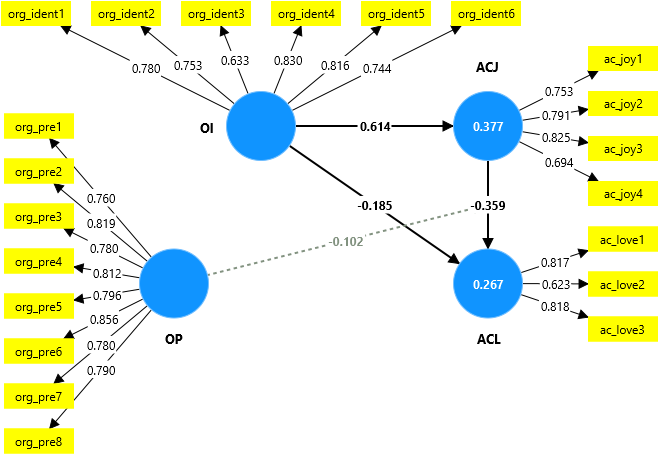
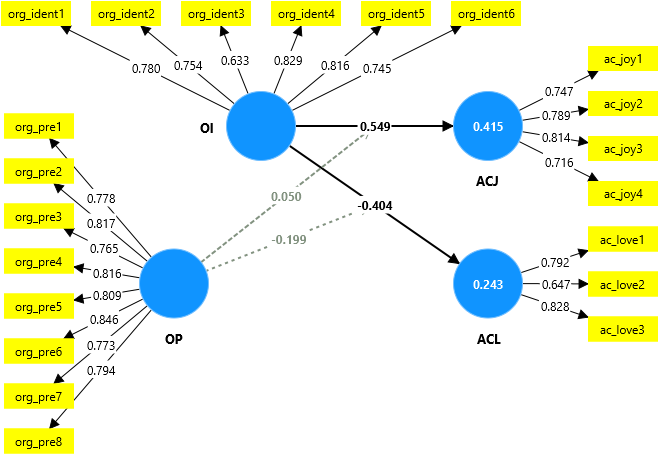
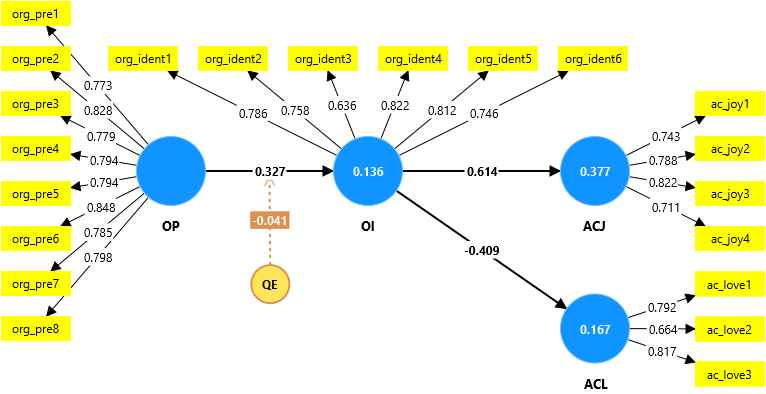
Download and import
Simply download the project and import it in SmartPLS 4.
References
Bergami, M. & Bagozzi, R.P. (2000). Self-Categorization, Affective Commitment and Group Self-Esteem as Distinct Aspects of Social Identity in the Organization. British Journal of Social Psychology, 39(4), 555-577.
Hair, J.F., Hult, G.T.M., Ringle, C.M., and Sarstedt, M. (2022). A Primer on Partial Least Squares Structural Equation Modeling (PLS-SEM), 3rd Ed., Thousand Oaks, CA: Sage.
Hair, J. F., Sarstedt, M., Ringle, C. M., & Gudergan, S. P. (2024). Advanced Issues in Partial Least Squares Structural Equation Modeling (PLS-SEM), 2nd Ed., Thousand Oaks, CA: Sage.
Hwang, H. & Takane, Y. (2004). Generalized Structured Component Analysis. Psychometrika, 69(1), 81-99.
